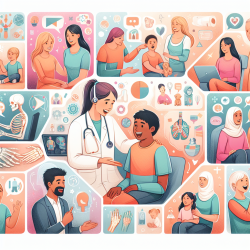Understanding the Study
The research conducted at Ajou University School of Medicine evaluated the efficacy of different treatment protocols for children diagnosed with OME. The study involved 84 children, divided into five groups receiving various combinations of antibiotics, steroids, and antihistamines. Key findings include:- 42.9% of children showed resolution within 6.9 weeks.
- 42.9% required ventilation tube (VT) insertion.
- There was no significant difference in the effectiveness of the five treatment protocols.
- Children with unilateral OME had a better prognosis than those with bilateral OME.
Implementing Research Findings in Practice
To enhance outcomes for children with OME, practitioners can consider the following evidence-based strategies:1. Emphasize Precise Documentation
Accurate and detailed documentation from primary care physicians is crucial. Information such as effusion duration, previous treatments, and developmental status helps tertiary care specialists make informed decisions.2. Consider Early Intervention
Given the low resolution rate observed in the study, early intervention may be necessary for children with prolonged or severe symptoms. This includes considering VT insertion earlier than the standard three to six months of watchful waiting.3. Evaluate Allergic Symptoms
The study found no significant response to antihistamines or corticosteroids in children with allergic symptoms. Practitioners should evaluate the necessity of these medications on a case-by-case basis.4. Develop a Referral System
Creating a standardized referral form and system can facilitate better communication between primary care physicians and specialists. This ensures that all relevant information is transferred accurately.Encouraging Further Research
The study highlights the need for ongoing research to develop more effective treatment protocols for OME. Practitioners are encouraged to stay updated with the latest research and consider participating in studies to contribute to the growing body of knowledge.Conclusion
Implementing these strategies based on the study's findings can lead to better management of OME in children, ultimately improving their speech and language outcomes. Practitioners play a crucial role in translating research into practice, ensuring that children receive the best possible care.To read the original research paper, please follow this link: Management for the Children with Otitis Media with Effusion in the Tertiary Hospital.










